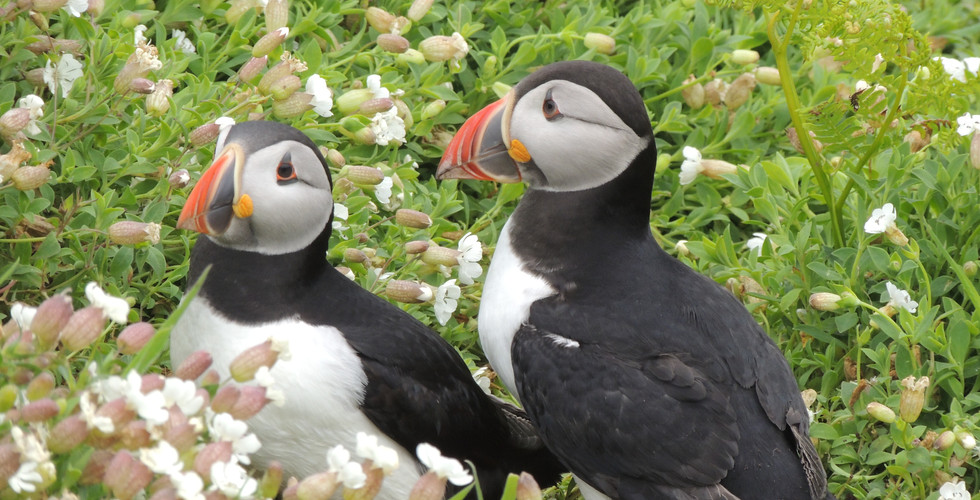Atlantic Puffin (Fratercula arctica)
- J Gill
- May 24, 2022
- 3 min read
Updated: May 25, 2022

The star of the show when you visit Skomer Island during breeding season, of course, is the puffin. Everyone loves these birds because of their appearance. They look so cute, and the shape of their eye socket makes it look like they have sad puppy eyes all the time, and I think that's how they lull you into thinking they are the sweetest things on earth. They certainly are little characters, and while I had no negative encounters with them, a taxi driver we had that goes scuba diving in the region told us that the puffins attack them in the water (puffins are diving birds) and also like to use the divers as "poop targets." She said she wanted to show the other side of puffin character! It was pretty funny. I didn't have any problems with them when I was there.

One of the things that surprised me the most was how close they were to people and to the pathways you required to stay on when you visit. When I first arrived at the island and saw a whole bunch of puffins right there, I wanted to take all my photos there because I didn't know what the conditions would be like once we got farther along in our walk. I thought for sure they'd be too far away for decent photos and that they'd be down on rocks for their nests or something. Little did I know that these little birds, numbering 40,000 on the island (or about 20,000 breeding pairs) burrow all over the surface of the island. They're playing or they're gathering grasses and plants to line their nests. You could easily get a half decent shot with a phone camera; that's how close they get. I'm still happy to have used my good camera, though, as I could get some good shots to zoom in on and study details of their physical features.
The main reason why seeing the puffins is so spectacular is not just the fact that you can see thousands of them in one visit, but that the time during which you can see them is somewhat limited, only 4 months of the year between April and July, and then the rest of the time they're at sea. Additional facts we learned about them are that they:
mate with same partner for life;
engage in a courtship practice known as billing, where a mating pair will rub their beaks against each the other's beak;
only have bright beaks during mating season but have greyer beaks otherwise;
tend to return to the same nesting site where they were born to nest again, much like salmon returning to the same stream where they were born to spawn.
The last point is significant because once they leave a location permanently, it's hard to get them to come back. Apparently this had happened on one of the nearby islands (I can't remember now if it was Grassholm or Ramsey Island) where one of them became unsuitable for nesting for reasons I can't remember, and despite the RSPB's efforts to fix the problem that made them leave to try to re-populate the island, the puffins won't come back. It was explained to us that this could eventually become a problem on Skomer Island because there are so many burrows in it that it could actually collapse the topsoil where the burrows are built and drive the puffins away forever. At least the other birds will return, but given that puffins are at risk in the UK, this is probably not a good thing. Apparently the precedent for this has already been set in that Grassholm Island experienced this phenomenon already, so I sure hope that doesn't happen to Skomer as I don't think there are a sufficient number of suitable locations on the west side of the country to take on hundreds of thousands of new nests (when you include the razorbills and Manx shearwaters in the number).
Because the puffins are so close to the path, I was able to get many more good photos of them than other species I saw there. I hope you enjoy them as much as I did!






































Comments